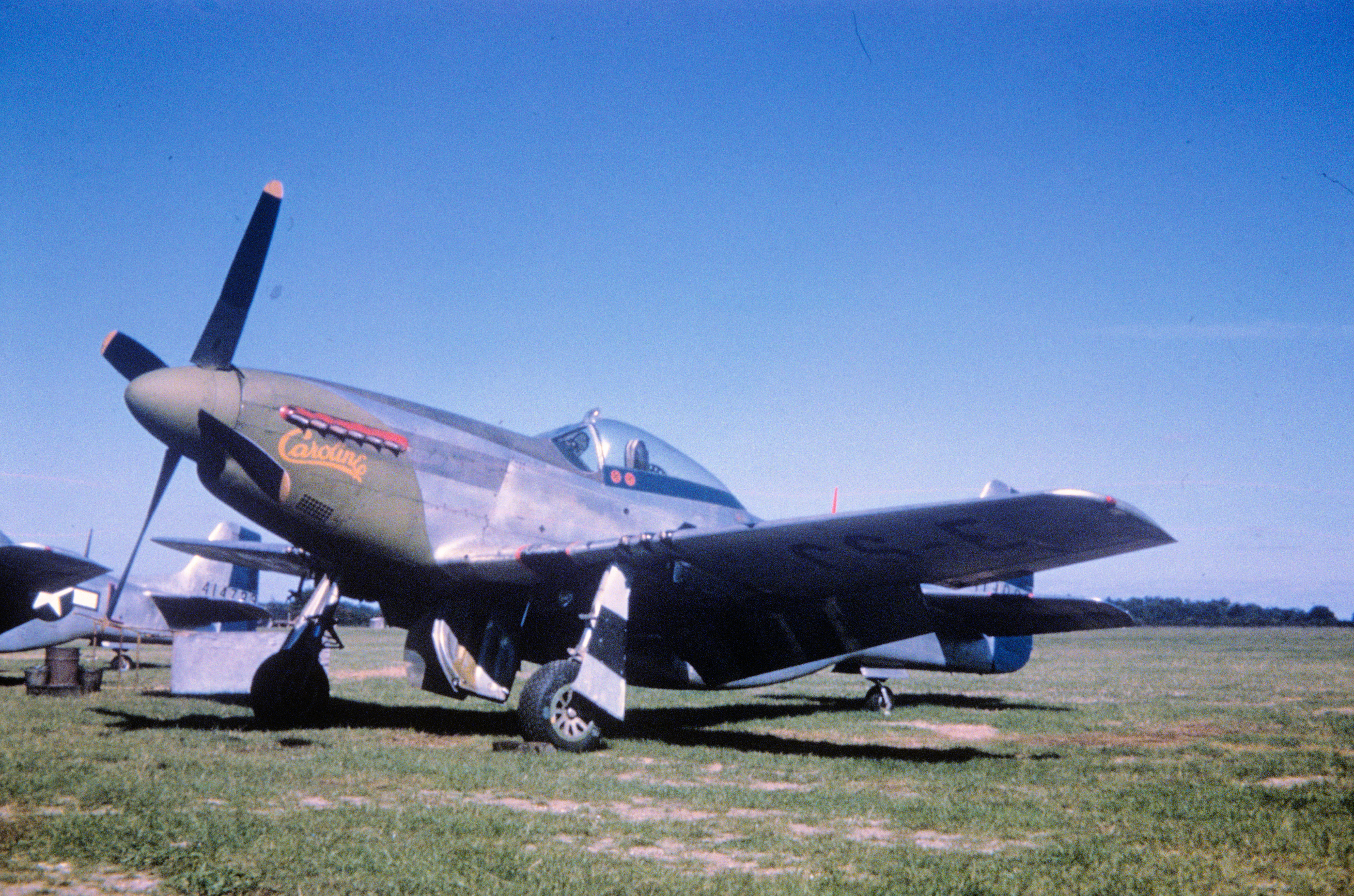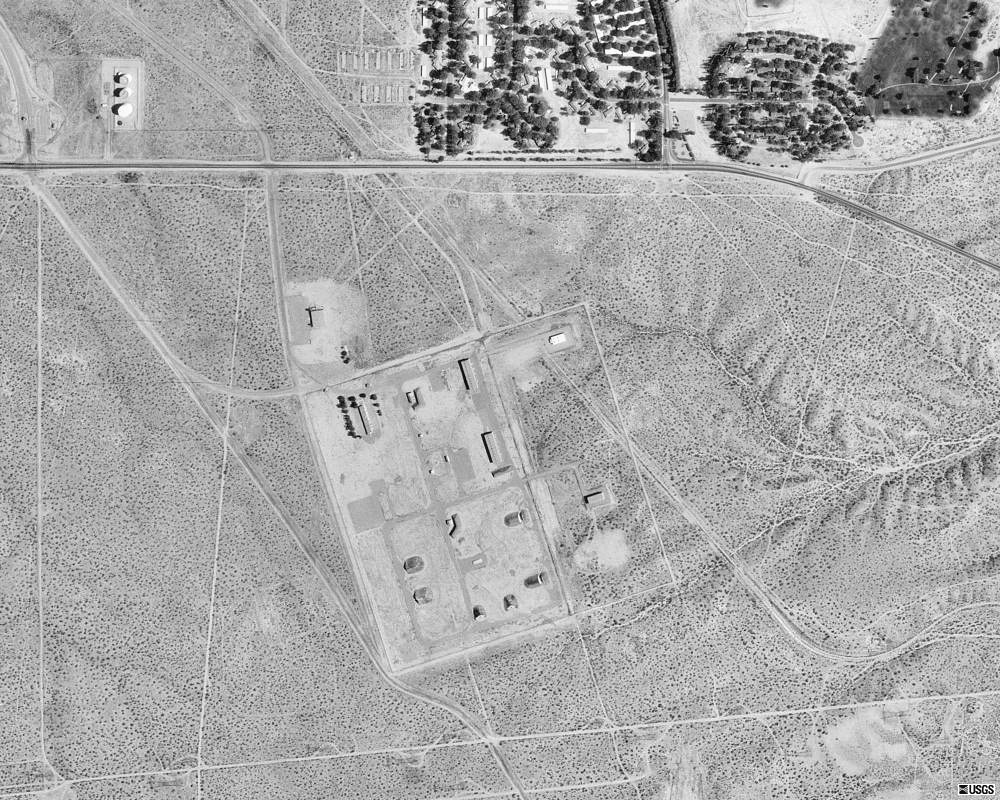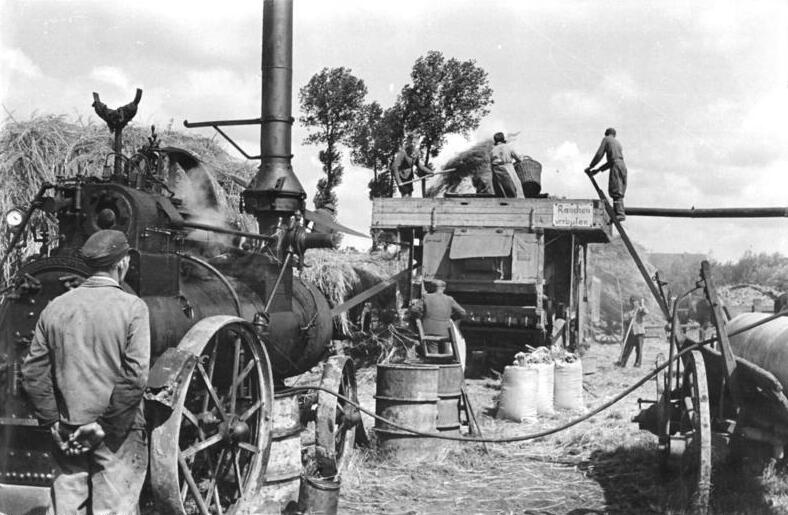|
Claude J. Crenshaw
Claude James Crenshaw (December 12, 1918 – March 17, 1972) was a United States Air Force lieutenant colonel and a flying ace, who was credited in destroying seven enemy aircraft in aerial combat during World War II. Early life Crenshaw was born in 1918, in Monroe, Louisiana. World War II In April 1944, Crenshaw was assigned to the 369th Fighter Squadron within the 359th Fighter Group in the European Theater of Operations. Based at RAF East Wretham, he flew missions in the North American P-51 Mustang. On September 11, 1944, while leading a flight over Kölleda, Germany, Crenshaw's flight encountered 100 Messerschmitt Bf 109s. In the encounter, Crenshaw shot down two Bf 109s and on the same mission, he and his wingman strafed an enemy airfield with Crenshaw destroying an enemy airplane on the ground. On September 18, during a mission over Düsseldorf, Germany, he shot down a Bf 109 that was attacking his wingman, bringing his total to three aerial victories. On November 21, ... [...More Info...] [...Related Items...] OR: [Wikipedia] [Google] [Baidu] |
Monroe, Louisiana
Monroe (historically french: Poste-du-Ouachita) is the eighth-largest city in the U.S. state of Louisiana, and parish seat of Ouachita Parish. With a 2020 census-tabulated population of 47,702, it is the principal city of the Monroe metropolitan statistical area, the second-largest metropolitan area in North Louisiana. Etymology As governor of Louisiana, Esteban Rodríguez Miró had ''Fort Miro'' built in 1791. Fort Miro changed its name to Monroe to commemorate the first arrival of the steamboat ''James Monroe'' in the spring of 1820. The ship's arrival was the single event, in the minds of local residents, that transformed the outpost into a town. Credit for the name is indirectly given to James Monroe of Virginia, the fifth President of the United States, for whom the ship was named. The steamboat is depicted in a mural at the main branch of the Ouachita Parish Public Library. History Early history–late 20th century Monroe's origins date back to the Spanish colon ... [...More Info...] [...Related Items...] OR: [Wikipedia] [Google] [Baidu] |
359th Fighter Group - P-51D Mustang 44-13893
*
*
{{mil-unit-dis ...
359th may refer to: *359th Bombardment Squadron, United States Air Force unit *359th Fighter Group, unit of the Kentucky Air National Guard, stationed at Louisville Air National Guard Base, Kentucky *359th Fighter Squadron, unit of the Tennessee Air National Guard 164th Airlift Wing *359th Infantry Division (Wehrmacht), German infantry division in World War II *359th Siege Battery, Royal Garrison Artillery, established under the Glamorgan Royal Garrison Artillery in Lavernock in 1917 * 359th Infantry Regiment, a unit of the United States Army See also *359 (number) *359, the year 359 (CCCLIX) of the Julian calendar *359 BC __NOTOC__ Year 359 BC was a year of the pre-Julian Roman calendar. At the time, it was known as the Year of the Consulship of Laenas and Imperiosus (or, less frequently, year 395 ''Ab urbe condita''). The denomination 359 BC for this year has b ... [...More Info...] [...Related Items...] OR: [Wikipedia] [Google] [Baidu] |
P-51D Mustang
Over twenty variants of the North American P-51 Mustang fighter were produced from 1940, when it first flew, to after World War II, some of which were employed also in the Korean War and in several other conflicts. Allison-engined Mustangs NA-73X The prototype of the Mustang, designated NA-73X, was rolled out by North American Aviation on 9 September 1940, albeit without an engine, and was first flown the following 26 October. The Mustang was originally designed to use a low-altitude rated Allison V-1710 engine. Unlike later models, Allison-powered Mustangs were characterized by the carburetor air intake placed on the dorsal surface of the nose, immediately behind the propeller. Mustang Mk I (NA-73 and NA-83) The first production contract was awarded by the British for 320 NA-73 fighters, named Mustang Mk I by an anonymous member of the British Purchasing Commission; a second British contract soon followed, which called for 300 more (NA-83) Mustang Mk I fighters. Contract ... [...More Info...] [...Related Items...] OR: [Wikipedia] [Google] [Baidu] |
Germany
Germany, officially the Federal Republic of Germany (FRG),, is a country in Central Europe. It is the most populous member state of the European Union. Germany lies between the Baltic and North Sea to the north and the Alps to the south. Its 16 constituent states have a total population of over 84 million in an area of . It borders Denmark to the north, Poland and Czechia to the east, Austria and Switzerland to the south, and France, Luxembourg, Belgium, and the Netherlands to the west. The nation's capital and most populous city is Berlin and its main financial centre is Frankfurt; the largest urban area is the Ruhr. Settlement in what is now Germany began in the Lower Paleolithic, with various tribes inhabiting it from the Neolithic onward, chiefly the Celts. Various Germanic tribes have inhabited the northern parts of modern Germany since classical antiquity. A region named Germania was documented before AD 100. In 962, the Kingdom of Germany formed the ... [...More Info...] [...Related Items...] OR: [Wikipedia] [Google] [Baidu] |
Victorville, California
Victorville is a city in Victor Valley in San Bernardino County, California. Its population as of the 2020 census was 134,810. History In 1858, Aaron G. Lane came to what is now known as Victorville and founded a waystation called "Lane's Crossing." For many years it provided shelter and supplies for people journeying across the desert from the east to San Bernardino. Lane's Crossing was on the Mojave River on today's Turner Road, two miles north of where Interstate 15 crosses the river. Lane was a veteran of the Mexican–American War who had had malaria during that war. Originally he migrated west to join the California gold rush, but he learned that he could make a better living selling supplies to the miners. Lane settled in Ione, near Sutter's Mill in northern California, during those years, but migrated to San Bernardino in 1857. He settled on the Mojave River in 1858, where he established his waystation. He later sold out to Texan John Fry Miller, who changed the na ... [...More Info...] [...Related Items...] OR: [Wikipedia] [Google] [Baidu] |
Focke-Wulf Fw 190
The Focke-Wulf Fw 190, nicknamed ''Würger'' ("Shrike") is a German single-seat, single-engine fighter aircraft designed by Kurt Tank at Focke-Wulf in the late 1930s and widely used during World War II. Along with its well-known counterpart, the Messerschmitt Bf 109, the Fw 190 became the backbone of the (Fighter Force) of the . The twin-row BMW 801 radial engine that powered most operational versions enabled the Fw 190 to lift larger loads than the Bf 109, allowing its use as a day fighter, fighter-bomber, ground-attack aircraft and to a lesser degree, night fighter. The Fw 190A started flying operationally over France in August 1941 and quickly proved superior in all but turn radius to the Supermarine Spitfire (early Merlin-powered variants)#Mk V (Mk V (Types 331, 349 and 352)), Spitfire Mk. V, the main front-line fighter of the Royal Air Force (RAF), particularly at low and medium altitudes. The 190 maintained superiority over Allies of World War II, Allied fighters until th ... [...More Info...] [...Related Items...] OR: [Wikipedia] [Google] [Baidu] |
Merseburg
Merseburg () is a town in central Germany in southern Saxony-Anhalt, situated on the river Saale, and approximately 14 km south of Halle (Saale) and 30 km west of Leipzig. It is the capital of the Saalekreis district. It had a diocese founded by Archbishop Adalbert of Magdeburg. The University of Merseburg is located within the town. Merseburg has around 33,000 inhabitants. Names * cs, Merseburk, Meziboř * french: Mersebourg * german: Merseburg * la, Merseburga * pl, Międzybórz * wen, Mjezybor Geography The town Merseburg consists of Merseburg proper and the following four ''Ortschaften'' or municipal divisions:Hauptsatzung der Stadt Merseburg § 15, April 2019. * [...More Info...] [...Related Items...] OR: [Wikipedia] [Google] [Baidu] |
Düsseldorf
Düsseldorf ( , , ; often in English sources; Low Franconian and Ripuarian: ''Düsseldörp'' ; archaic nl, Dusseldorp ) is the capital city of North Rhine-Westphalia, the most populous state of Germany. It is the second-largest city in the state and the seventh-largest city in Germany, with a population of 617,280. Düsseldorf is located at the confluence of two rivers: the Rhine and the Düssel, a small tributary. The ''-dorf'' suffix means "village" in German (English cognate: '' thorp''); its use is unusual for a settlement as large as Düsseldorf. Most of the city lies on the right bank of the Rhine. Düsseldorf lies in the centre of both the Rhine-Ruhr and the Rhineland Metropolitan Region. It neighbours the Cologne Bonn Region to the south and the Ruhr to the north. It is the largest city in the German Low Franconian dialect area (closely related to Dutch). Mercer's 2012 Quality of Living survey ranked Düsseldorf the sixth most livable city in the world. ... [...More Info...] [...Related Items...] OR: [Wikipedia] [Google] [Baidu] |
Strafed
Strafing is the military practice of attacking ground targets from low-flying aircraft using aircraft-mounted automatic weapons. Less commonly, the term is used by extension to describe high-speed firing runs by any land or naval craft such as fast boats, using smaller-caliber weapons and targeting stationary or slowly-moving targets. Etymology The word is an adaptation of German ''strafen'', to punish, specifically from the humorous adaptation of the German anti-British slogan '' Gott strafe England'' (May God punish England), dating back to World War I. Description Guns used in strafing range in caliber from machine guns, to autocannon or rotary cannon. Although ground attack using automatic weapons fire is very often accompanied with bombing or rocket fire, the term "strafing" does not specifically include the last two. The term "strafing" can cover either fixed guns, or aimable (flexible) guns. Fixed guns firing directly ahead tend to be more predominant on fix ... [...More Info...] [...Related Items...] OR: [Wikipedia] [Google] [Baidu] |
Messerschmitt Bf 109
The Messerschmitt Bf 109 is a German World War II fighter aircraft that was, along with the Focke-Wulf Fw 190, the backbone of the Luftwaffe's fighter force. The Bf 109 first saw operational service in 1937 during the Spanish Civil War and was still in service at the end of World War II in 1945. It was one of the most advanced fighters when it first appeared, with an all-metal monocoque construction, a closed canopy, and retractable landing gear. It was powered by a liquid-cooled, inverted-V12 aero engine. It was called the Me 109 by Allied aircrew and some German aces, even though this was not the official German designation. It was designed by Willy Messerschmitt and Robert Lusser who worked at Bayerische Flugzeugwerke during the early to mid-1930s. It was conceived as an interceptor, although later models were developed to fulfill multiple tasks, serving as bomber escort, fighter-bomber, day-, night-, all-weather fighter, ground-attack aircraft, and reconnaissan ... [...More Info...] [...Related Items...] OR: [Wikipedia] [Google] [Baidu] |
Kölleda
Kölleda (until 1927 Cölleda) is a small rural town in Thuringia. The municipality belongs to the district of Sömmerda and is located about ten kilometres east of the district town of Sömmerda on the edge of the Thuringian Basin. It is the third largest municipality in the district with about 6300 inhabitants. Kölleda is the seat of the Kölleda administrative community, although it does not belong to it. The inhabitants are called "Kölledaer". Kölleda is a sub-centre for the region. The town is characterised by a former traditionally large cultivation of medicinal and aromatic herbs, especially peppermint. This led to the nickname "peppermint town" and "peppermint railway" for the Straußfurt- Großheringen railway line that runs past. Kölleda has an eventful 1200-year old history. Significant for the town's development during the National Socialist era were the construction of an air base and an aircraft office for the Luftwaffe and later, during the GDR era, the VEB F ... [...More Info...] [...Related Items...] OR: [Wikipedia] [Google] [Baidu] |
North American P-51 Mustang
The North American Aviation P-51 Mustang is an American long-range, single-seat fighter and fighter-bomber used during World War II and the Korean War, among other conflicts. The Mustang was designed in April 1940 by a team headed by James H. Kindelberger of North American Aviation (NAA) in response to a requirement of the British Purchasing Commission. The Purchasing Commission approached North American Aviation to build Curtiss P-40 fighters under license for the Royal Air Force (RAF). Rather than build an old design from another company, North American Aviation proposed the design and production of a more modern fighter. The prototype NA-73X airframe was rolled out on 9 September 1940, 102 days after the contract was signed, and first flew on 26 October. The Mustang was designed to use the Allison V-1710 engine, which had limited high-altitude performance in its earlier variants. The aircraft was first flown operationally by the RAF as a tactical-reconnaissance aircr ... [...More Info...] [...Related Items...] OR: [Wikipedia] [Google] [Baidu] |


.jpg)

.jpg)





